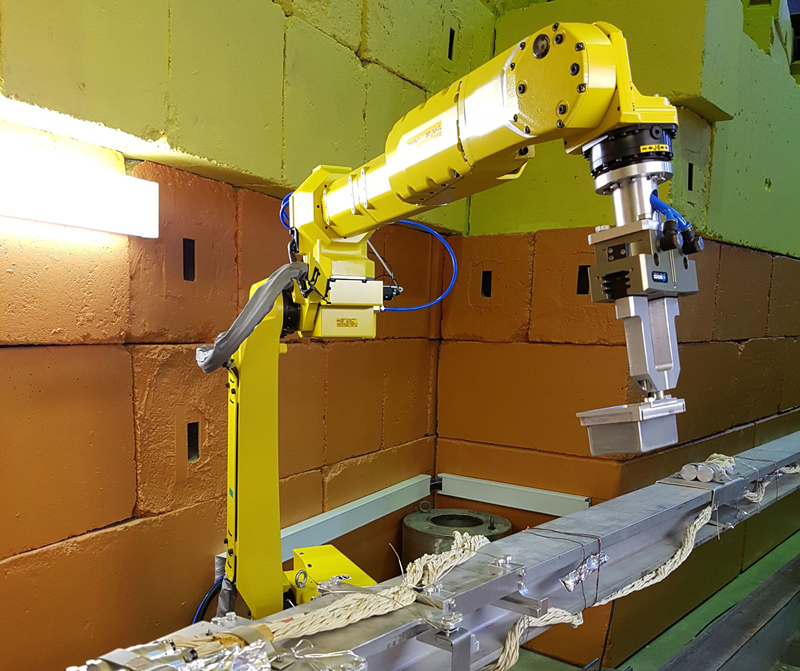Robot to help you!
News, 28 November 2018
The robotic arm for moving highly radioactive samples was put into operation at the facility for radiation studies (beam #3) of the IBR-2 reactor. The facility is intended for radiation resistance diagnostics of wide range of materials which are used as magnetic field sensors for tokamaks (ITER, DEMO), elements of detectors for colliders (LHC, NICA) and other systems, neutron beam interrupters and neutron guides.
The facility has the following characteristics. The density of the neutron flux with energy of 25 MeV – 10 MeV is from 5 105 n/cm2•s to 2•1012 n/cm2•s, which provides the neutron fluence that passed through the sample in one standard reactor cycle (11 days), from 5•1011 n/cm2 to 2•1018 n / cm2. Along with that, the temperature on the sample during irradiation at the closest to the core point does not exceed 50° C.
A large number of leading Russian and foreign scientific and scientific-educational centres participate in these studies: the Ural Federal University (Ekaterinburg, Russia), the Troitsk Institute for Innovation and Fusion Research, the State Corporation “Rosatom” (Moscow, Russia), the National Research Nuclear University MEPhI, the Lebedev Physical Institute RAS, the Laboratory of magnetic sensors of the Lviv Polytechnic National University (Ukraine), the Belarusian State Technological University (Minsk), the Institute of Nuclear Physics of the Academy of Sciences of the Republic of Uzbekistan (Tashkent), the TRIUMPH accelerator center (Vancouver, Canada), the Physics Department of Nanjing University (China), the European Spallation Source (Lund, Sweden) and, of course, the JINR laboratories of Neutron Physics, High Energy Physics, Nuclear Problems and Nuclear Reactions.
 In the photo: the robotic arm moving the samples
In the photo: the robotic arm moving the samples
Growing interest in experiments at the facility leads to an increase in the number of samples tested and requires automation of the process of their installation (removal) to minimize the dose of ionizing radiation received by personnel. For these purposes, Frank Laboratory of Neutron Physics developed a project for the implementation of a robotic arm in the technological environment at the facility for radiation research. The use of the robot will allow remote installing (removal) of samples irradiated up to different doses, without direct contact of personnel with radioactive samples and structural elements before and after irradiation. The accuracy of the location of the samples will be achieved by precise positioning of the facility and setting certain coordinates in the programme operating the arm. As a result of the robotic arm use, first of all, the radiation dosage load on the staff will be reduced. Also, with regard of a new possibility of independent and rapid change of samples in high fields of ionizing radiation, new kinds of experiments will be available which will increase the performance of the facility (number of samples tested).
The authors thank the staff of the Scientific and Experimental Department of Spectrometers and the Electrical Engineering Department of the FLNP represented by Gleb G. Komyshev, Alexey V. Galushko, Aleksey V. Altynov, Valery V. Ermolaev, Alexander P. Sirotin, Valery K. Shirokov, Anatoly A. Pankov, Georgy Yu. Tsaritov, Victor I. Evstratov, and Lev V. Fomichev for their invaluable contribution to the implementation of the project on the implementation of the robotic arm at the IBR-2 reactor.
Maksim Bulavin, Sergey Kulikov